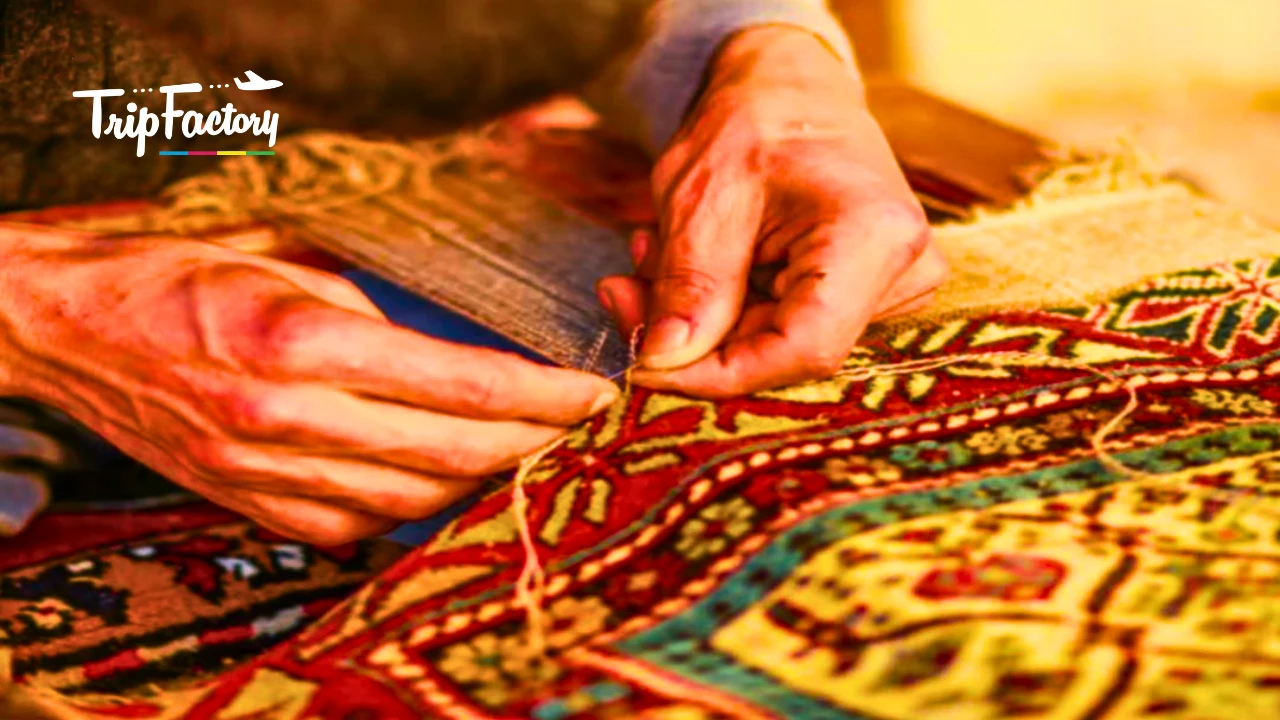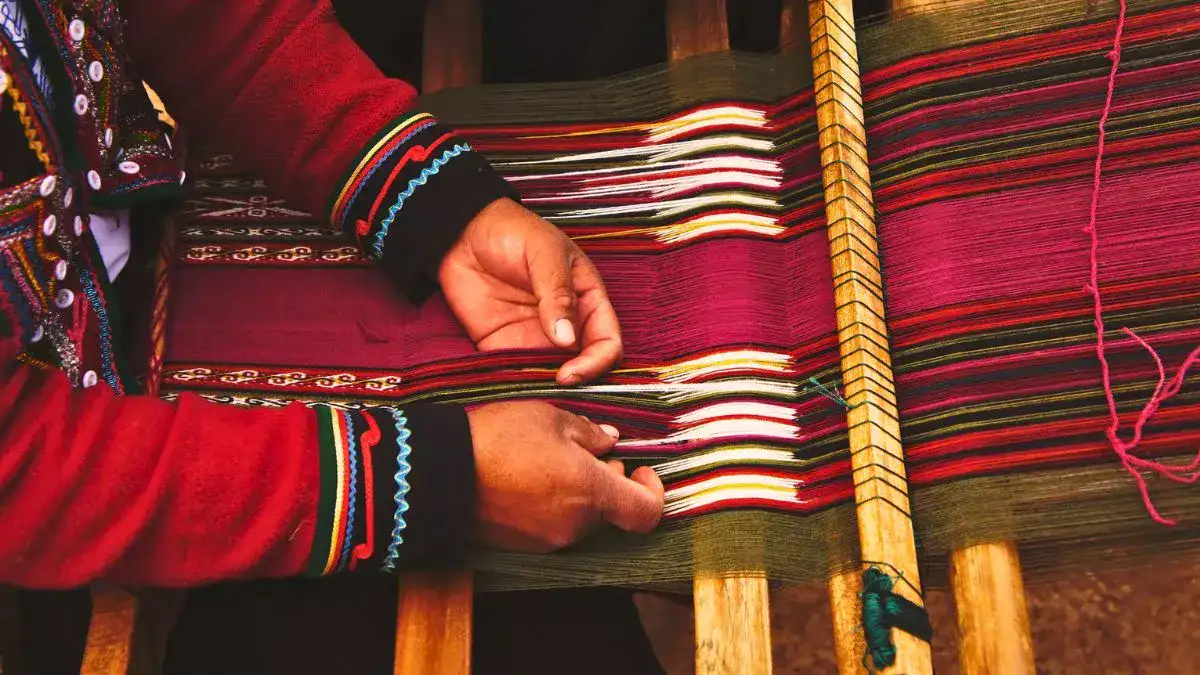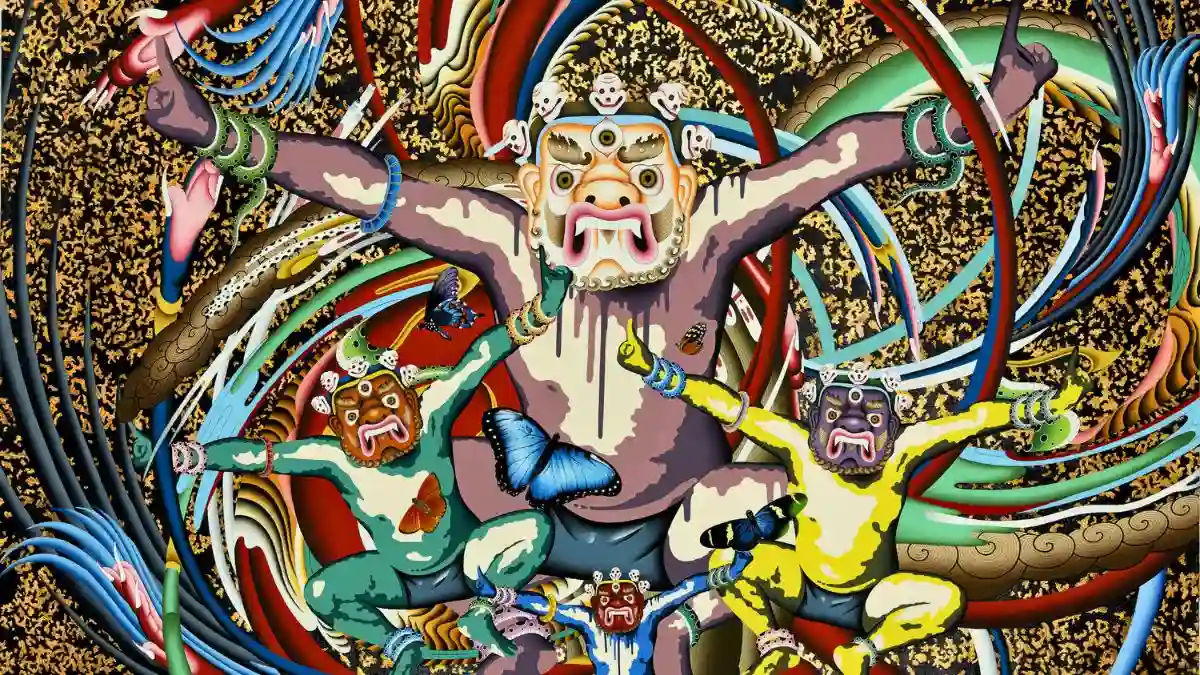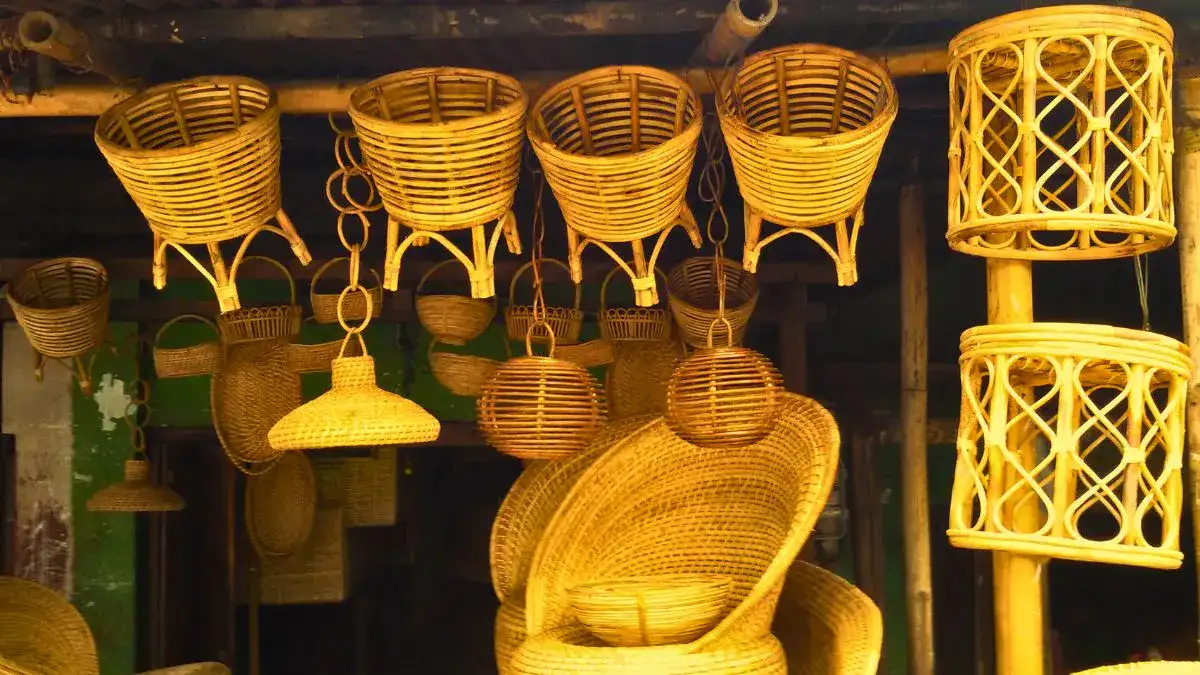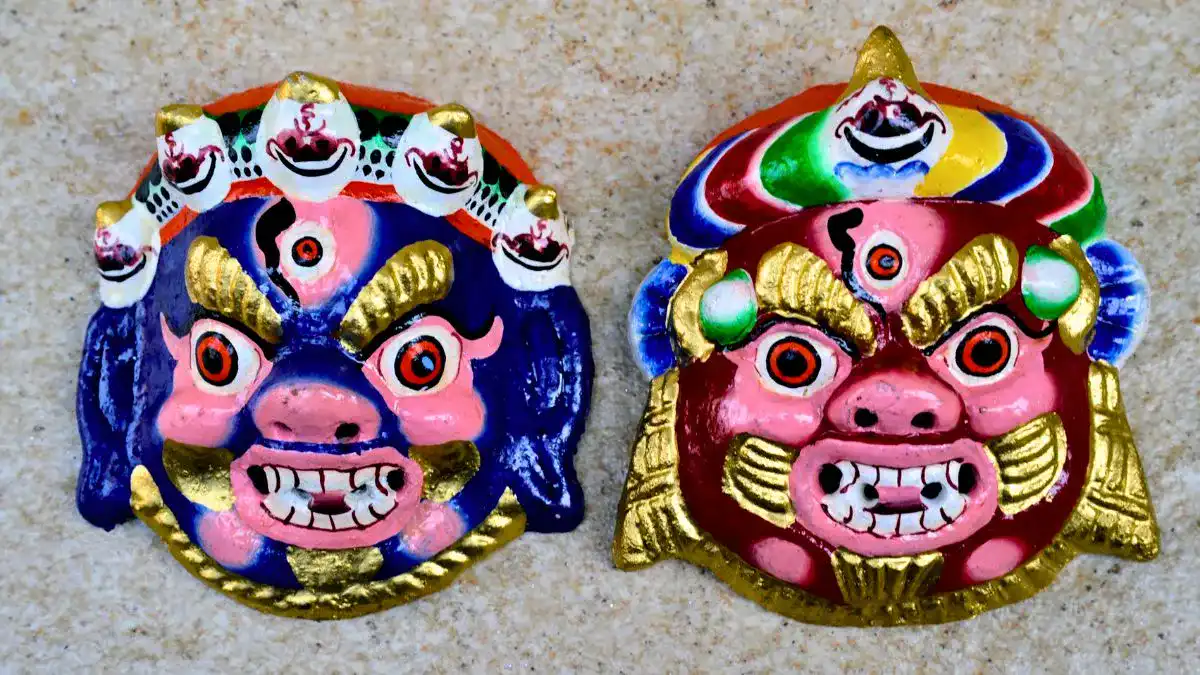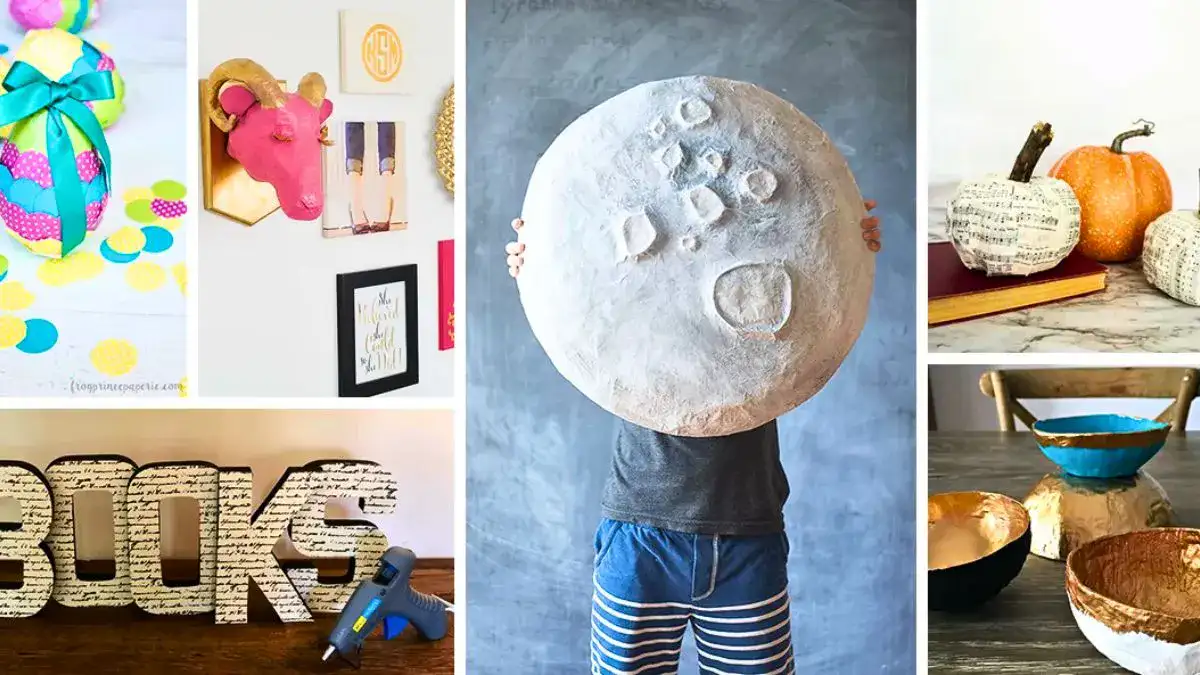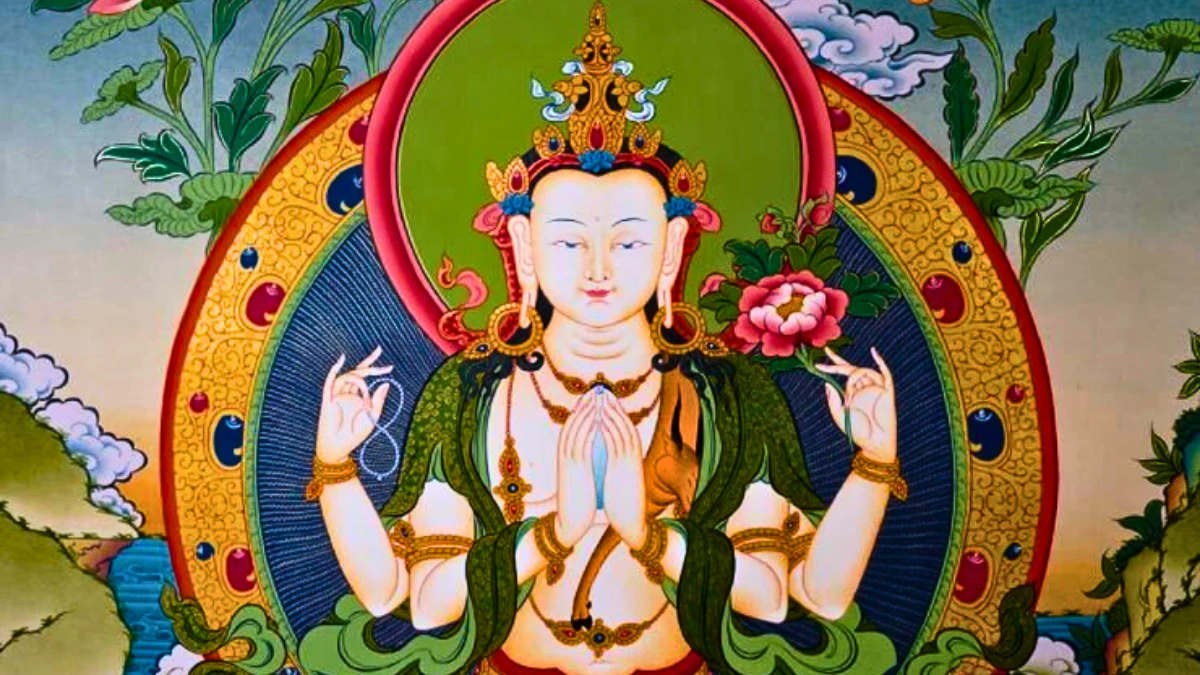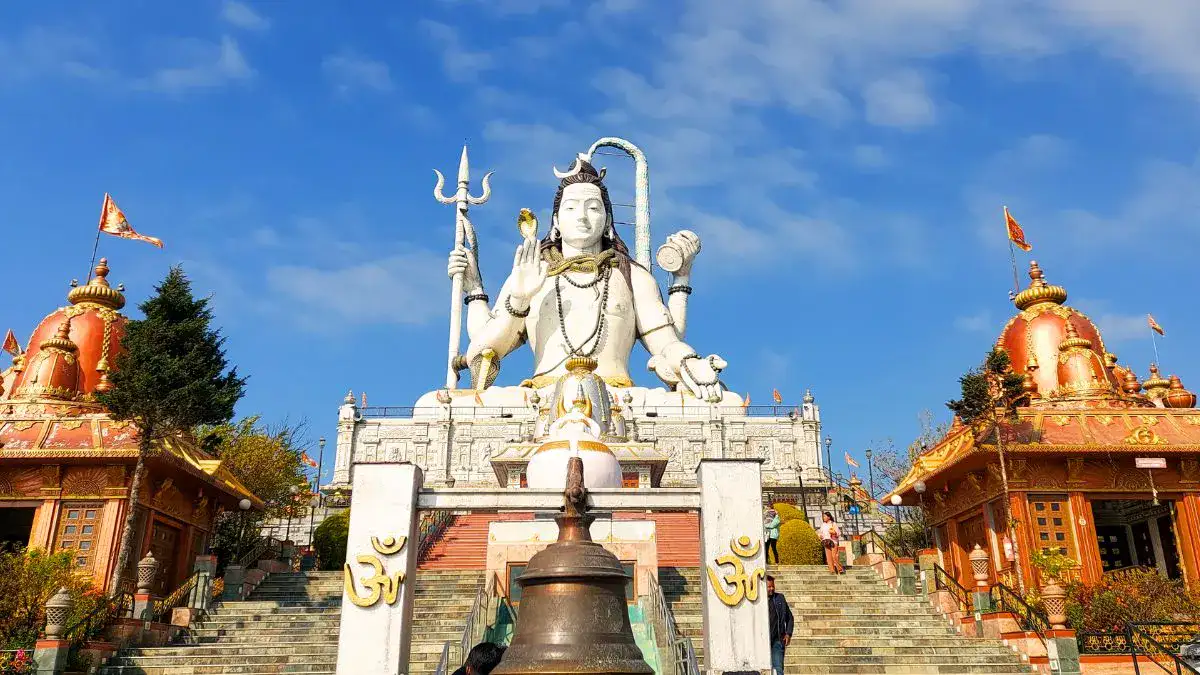Surrounded by the towering peaks of Khangchendzonga, Sikkim gleams in the Himalayas like a treasure trove. Despite its small size, this refuge in the northeast preserves a creative legacy that is as intricately detailed as its mountainous landscape. Sikkim’s traditional arts are a reflection of the spirits of its people, from the vibrant textiles woven with natural dyes to the monk paintings of Pemayangtse.
The Lepcha, who are said to be the original inhabitants of Sikkim, are skilled weavers and dyers who create vivid clothing out of Himalayan wool and silk. Their geometric designs merge the ancient and the contemporary in linen and wool, subtly emulating the wildflowers of Sikkim. With the support of their bare feet firmly rooted in the ground, the swaying shadows of Lepcha backstrap looms weave shawls and wraps that are fragrant with
Lepcha Weaving
Handwoven textiles and looms are part of the rich heritage of Sikkim’s Lepcha people, who are essential to the region’s creative scene. Traditionally, local flowers, barks, and herbs were used to dye sheep wool, which was then used to make lepcha shawls and quilts.
Common themes include simple outlines of geometric forms, stars, vegetation, and animals. Lepcha weaving of today combines ancient designs with modern shapes and novel textiles like silk and cotton.
Bhutia Thangka Art
The Bhutia people, who are of Bhutanese descent, consider thangka sacred painting to be a very specialized art style that demands great expertise and spiritual commitment. Buddhist tales and deities are portrayed in thangkas within a rigid framework of composition, proportions, and iconography.
Such rare thangka artists, who produce elaborate compositions with natural dyes on cotton canvas, are the lifeblood of Sikkim’s art and culture. Producing a single thangka requires exact grid measurements and meticulous brushwork, which might take many months.
Nepali Stone Carvings
Utilizing the plentiful local slate supply, stone carving quickly became a highly valued skill in Sikkim after being introduced by Nepalese masons. Hindu religious iconography of gods, temple sceneries, and legendary animals predominates in stone sculptures.
Mani-leaders, or Buddhist stone prayer wheels, are also widely available and intricately carved and ornamented. More contemporary sculptures with secular themes like animals and ethnic emblems are also available. Stone carving has been handed down through the centuries as a live art form in Sikkim.
Cane and Bamboo Crafts
In Sikkim’s rich artistic and cultural legacy, cane and bamboo crafts play a crucial role in the lives of Lepchas and Bhutias. The woods of the state are home to an abundance of bamboo, which supports a vibrant cottage economy of handicrafts.
Artists use split bamboo and cane strips together with other natural materials to weave baskets, wall hangings, mats, caps, and furniture. Using apparently basic grass stems, cane, and bamboo craft studios in rural Sikkim create beautiful artwork!
Mask Making
Sikkim’s artistic talent with wood, metals, textiles, clay, and paints is shown via masks used in ancient dances and shamanic rites. The art form creates vibrant masks of gods, animals, and mythological characters by drawing inspiration from a variety of religious traditions, including Buddhism, spirit worship, and totemic clans.
Every mask is different, made specifically for the dancer, or used ceremonially. The most complex masks, which are priceless cultural relics of Sikkim’s art and culture, may take months to produce by expert craftsmen with their exquisite carvings and detailing.
Paper Mache Crafts
Sikkim’s artistic legacy is enhanced by the fascinating textures, forms, and ornamental features seen in paper mache crafts. Artwork constructed from paper pulp over wireframes is known as papier mache. Pieces from lampshades and vases to figurines and animal shapes are made in Sikkim, and they are often brilliantly painted and lacquered.
The paper strips are layered and molded into three-dimensional, surprisingly lightweight, realistic objects to create intricate artwork. Workshops in Gangtok provide insight into the process of creating paper mache crafts, which are essential to Sikkim’s art and craft tradition.
Paintings and Murals
Sikkim has a thriving secular painting culture that extends beyond religious art, as shown by the works of regional rural and urban painters. Alongside artistic acrylic renditions, watercolor landscapes that capture the splendor of Sikkimese valleys and peaks are favorites.
Additionally, there are contemporary urban art murals with graffiti-inspired designs and cultural topics that provide novel viewpoints. The artisanal basis promotes creative flexibility based on drawing and coloring abilities, even if it is stylistically current. These modern painting techniques carry on Sikkim’s artistic and artisanal heritage.
Preserving a Rich Heritage
As a result, Sikkim’s art and craft include a wide variety that highlights the abilities and implements developed within its people. An increasing number of traditional art forms are facing difficulties due to industrialization and emigration. Nonetheless, initiatives are still in place to assist master craftsmen and every new generation by providing them with training, resources, and new avenues for product sales.
For rural families, arts and crafts may represent a vital source of revenue generated from home. Sikkim manages to hold onto this distinct part of its identity despite its fast modernization by preserving its rich artistic legacy.
Therefore, trips to Sikkim should focus on galleries, workshops, handicraft shops, and cultural venues that protect the region’s uncommon arts and crafts rather than just mountain scenery and outdoor activities. Communities’ collaborative artwork serves as a visible representation of Sikkim’s intangible cultural legacy.
Don’t forget to purchase a genuine work of art or craft during your next visit! See how creative typefaces continue to enhance Sikkimese culture beyond souvenirs by incorporating organic forms, colors, and symbols. The craftwork legacy of Sikkim silently flourishes as the living art and hand behind the breathtaking scenery.
Conclusion
Sikkim’s art and craft heritage reflects its people, landscapes, and deep cultural roots. From Lepcha textiles to Bhutia thangka paintings, each craft showcases the region’s artistry. Preserving these traditions is vital for Sikkim’s cultural identity and the livelihood of its rural artisans.
When visiting, explore local galleries and workshops to experience the region’s creative spirit. Purchasing handcrafted pieces supports artisans and keeps Sikkim’s traditions alive. Bring home a piece of this vibrant heritage, a lasting reminder of the region’s artistic legacy.
To immerse yourself in Sikkim’s culture, consider booking a Sikkim tour package by TripFactory. It’s the perfect way to explore the region’s art, crafts, and natural beauty while supporting local communities.
Frequently Asked Question
What are some traditional crafts of Sikkim?

Sikkim is known for various traditional crafts such as Lepcha weaving, Bhutia thangka art, Nepali stone carvings, cane and bamboo crafts, mask-making, and paper mache crafts.
How is Lepcha weaving unique?

Lepcha weaving, traditionally done by the Lepcha community, uses natural dyes and Himalayan wool to create vibrant shawls, quilts, and textiles with geometric designs that reflect the local flora.
What is Bhutia thangka art?

Bhutia thangka art is a sacred Buddhist painting style that requires great skill. Thangkas depict Buddhist deities and stories, created with natural dyes on cotton canvas, and often take months to complete due to their intricate detail.
What materials are used in Sikkimese bamboo and cane crafts?

Bamboo and cane crafts in Sikkim utilize local bamboo and cane strips to create baskets, mats, caps, and furniture. These materials are intricately woven by artisans from the region.
Why is mask-making important in Sikkim?
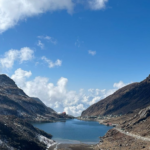
Masks are used in traditional dances and religious ceremonies, portraying gods, animals, and mythical figures. These masks are hand-carved and painted, taking months to make and representing an essential aspect of Sikkim’s cultural heritage.

